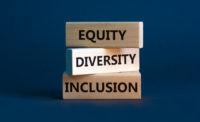Two months ago in this column, I addressed the alleged decline of milk consumption by Generation Z, defined as those born between 1997 and 2012. According to a report, Gen Z is consuming much less milk than the national average.
I subsequently provided some reasoning for this data, as provided by MilkPEP, pinpointing some reasons why Gen Z’s purchase less milk, including being still at home with their parents, in college, or in a transitional phase of life, whereas older generations, such as millennials, are often starting families and buying for fuller households.
Also, young people are eating dairy in many other ways, including cheese, yogurt, and ice cream.
Although there are certainly reasons for these recent trends, I do not want to gloss over the fact that there is a decline in Gen Z milk consumption. Thankfully, organizations are aware of these trends and aim to address them.
This is a great venue to highlight some of these recent efforts and how they may be changing younger consumers’ minds about milk and dairy in general, whether they belong to Gen Z or an adjacent demographic.
Here are some of the most recent events to promote dairy to the younger generation, including both education and gaming strategies:
- In the post-pandemic world, the National Dairy Council understands schools have changed, which presents new opportunities. One such way is the incorporation of STEM (science, technology, engineering, and math) curriculum into classrooms. The program’s goal is to offer a science-based counterbalance to the misunderstanding about how dairy is responsibly produced by farmers and its contributions to health and wellness.
- The Dairy Research and Promotion Program, also known as the Dairy Checkoff Program, has a long history of working with schools to make dairy available in innovative ways to meet the demands of kids and keep dairy in their lives. One promising initiative is the recent completion of a smoothie pilot test done with Chartwells K12, a food management company that serves more than 2 million meals every day in 4,500 schools representing 665 districts across the country. The National Dairy Council provided grant funding and checkoff partner General Mills gave culinary support and training materials for the school nutrition staff. Another checkoff partner, Hubert, a food service equipment manufacturer, provided blenders and insulated cooler bags to hold prepared smoothies and transport carts.
- Dairy MAX and the Gaming Community Network (GCN), announced the Level Unlocked Tournament. This event aims to bring together students and the broader gaming community to educate young gamers on the importance of fueling their body with healthy foods, so they have the energy to play their game. In June, students in Louisiana participated in a video submission challenge for the opportunity to play Madden NFL 23 against NFL wide receiver James Washington during a match that broadcasted live in July.
- Dairy MAX also partnered with three female student-athletes from different sports, universities, and backgrounds, with a focus on topics such as post-workout recovery with chocolate milk, heart health, cooking, and farming.
- MilkPEP debuted Zany Ziplines, a game concept it says the Fortnite community highly requested. The game offers three first-of-its-kind maps — Spacemap, Medieval Map, and Steampunk Map — featuring a series of floating platforms connected by elaborate ziplines where 16 players battle it out in a last-man-standing free-for-all.
- Earlier this year, MilkPEP also gave football fans the chance to win limited-edition non-fungible tokens (NFTs) featuring Team Milk athletes JuJu Smith-Schuster, Terry McLaurin, and Justin Herbert. The “got milk?” campaign created 15 NFTs varying in rarity, from base cards (3,097 available) and uncommon cards (1,549 available) to rare cards (529 available), super-rare cards (269 available) and one-of-a-kind cards (three available). Winners received a base, uncommon, rare or super-rare NFT to store in their virtual wallets.




